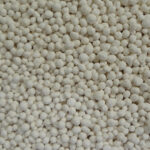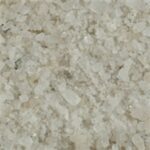




First of the Winter Maintenance Series.
What is Ice Melter?
Ice melter is a combination of multiple chemical compounds that work to create chemical reactions when coming in contact with Snow, Ice or water. Science.
The main function of Ice melter is to Raise the Freezing Point of Water creating a Brine solution thus preventing Ice from forming on Hard surfaces in and around your Residence, or your Place of work.
The two main Scientific terminologies when classifying Ice Melters is Exothermic & Endothermic. Exothermic Ice Melters release heat, rapidly acting to mix with the Present Environmental factors in this case Ice, Water & Snow. Endothermic Draws Heat from the Present Environment thus resulting in a slower reaction. We can categorize Exo & Endo based on their Working Temperatures. Exothermic works at very low temperatures of -25 F or – 32C, where Endothermic works at milder temperatures of 20F or -7C.
When determining what Ice Melter is best for you, we should look at these 3 factors:
1.Climate & Weather Conditions
The region you live and the current weather conditions play a huge role in what Ice Melter you should use. If you live in an Area that is prone to Extremely Cold Temps then you should consider a Exothermic Ice melt to combat Ice Formation(see North American Hardiness Zones), but if you live in Milder Climate, where the average winter temp do not get as cold then Endothermic should be good for you. Bare in Mind that Weather Conditions play a role in the effectiveness of your Ice melter application; Ground Temperatures, Rain or Freezing Rain, as well changing Weather/Temperatures.
2. Residual Action & Form
This determines how long the effect of the Ice Melter is sustained in your application. If you are a Business Owner or Manager with a Commercial Facility, Large Parking Lot, then it would be in your best interest to optimize your application with a Ice Melter that has longer Residual Action. If you are Home Owner or Renter that needs to take care of their own property then, you can do well with a Ice Melter with Moderate Residual Action. Ice Melter comes in 2 Main Forms; Solid Pellets or Liquid. Pellets are the most common and can vary in size and shape but for the most part are uniform spherical. This done to increase the permeating power of the pellet so that it can reach further down into Ice build ups. Liquid Brine is a Premixed Solution of 3/4 water & 1/4 Salt, this is an effective application as the Ice Melter is already in a Brine Form & can act quickly and retain its Residual action Longer.
3. Environmental Factors
When Considering the Best Ice Melter for your Application, Environmental Factors should play a Huge Role. Often overlooked due to high cost, but nonetheless Important & Effective, Ice melters that are Environmentally-Friendly can actually save you a lot of money in the long run. Most commercially available Ice melters contain Chlorides that are heavily Corrosive & Damaging to the immediate Environment. Resulting in Infrastructure damage to Concrete & Metal, Plant & Vegetation damage as well as polluting Waterways & Animal populations. The most Common concern among people is Concrete or Interlock damage & rightly so. Aged, Cracked or Porous Concrete/Precast can be easily damaged by prolonged Chloride use. Acetate Ice Melters are one of the only types of Applications that do not damage Concrete, Harm Plant life & have minimal impact on the Immediate Environment.
Various Types of Ice Melter
There is a variety of Ice melters Available, with different Compounds, Mixtures & Prices based on your specific Needs.
1.Sodium Chloride
- Also Known as Rock Salt, it is the cheapest, most readily available Ice melter on the Market
- Available in Liquid Brine at a Higher Cost, Moderate Residual Action
- Endothermic, Moderately Corrosive & Harmful if applied in excess
- -7C Melting point (20 F)
2.Magnesium Chloride
- Higher Price Point than Rock Salt but Relatively Reasonable
- Slow Acting/Slow Release but more easily diluted(Low RA)
- Exothermic, Less Corrosive than other Chlorides Also More Environmentally-friendly
- -18C Melting point(-5 F)
3.Calcium Chloride
- Most Expensive of the Chlorides
- Fast Acting Exothermic, Ideal for Commercial Properties with Longer Residual Action
- Can be used on Concrete Given that it is in good condition and not Porous or Cracked
- -31C Melting Point(-25 F)
4.Sodium Acetate
- 2nd Most expensive Acetate Ice Melter
- Fast Acting, Exothermic, approved for Airport Runways with a long Residual Action
- Non-Corrosive, & Environmentally-Friendly
- -20 C Melting Point(0 F)
5. Calcium Magnesium Acetate
- Most Expensive Ice Melter Available, Usually an Additive to Ice Melter Blends
- Moderate Acting, Endothermic with a Long Residual Action, Suitable for Pre-treatment
- Non-Corrosive & Environmentally-Friendly
- -10C Melting Point(15 F)
Other Applications
- Potassium- Expensive & not as effective as other Ice Melters, Not recommended
- Urea- Nitrogen Fertilizer, Expensive & not as effective as other Melters
- Sand- Used on Roadways in Northern Climates, Ideal as an Additive to Ice melting Blends*
Final Thoughts
The Ice Melter industry has many options available to fit your specific needs. If you are concerned about Concrete or Metal being Damaged on your property than go for a Non-Corrosive Ice Melter, if you are not overly Concerned about this & just want a cheap Deterrent, than go for Rock Salt. A good Alternative to Ice melter, in General, is Sand or Gravel, it is usually overlooked due to the “Messy” Qualities of its application, however we recommend it as an additive to Ice Melter blends. All in All, most Brands will sell you a type of Chloride Ice melter with Non-Corrosive & Enviro-Friendly Additive such as CMA, which eventually becomes Corrosive once the Additive wears off. Be sure to read the label or ask the right questions when buying Ice melter commercially.
If you found this Post useful, Please Leave us a comment!
